
The fine-tuning of URL structure is a pivotal detail in your SEO campaign, directly influencing search engine rankings and user navigation. This guide demystifies how strategic URL structuring can serve as a subtle yet powerful tool for URL structure SEO, without getting lost in complexity. You’ll glean insights on crafting URLs that are intuitive, easily indexed by search engines, and why every slash and keyword matters. Expect practical takeaways on optimizing your site’s URLs for a stronger SEO stance.
Key Takeaways
- A well-structured URL is vital for both SEO and user experience, with consistency, strategic keyword usage, and optimal length enhancing clarity and search engine rankings.
- URLs are constructed from various components, including the scheme (such as ‘https://‘), domain, and path, with static URLs preferred for SEO; URL parameters and trailing slashes require careful management to avoid duplication and confusion for search engines.
- White label SEO services, such as those provided by That! Company, allow agencies to offer professional SEO solutions to clients without in-house expertise, saving time and resources while expanding service offerings.
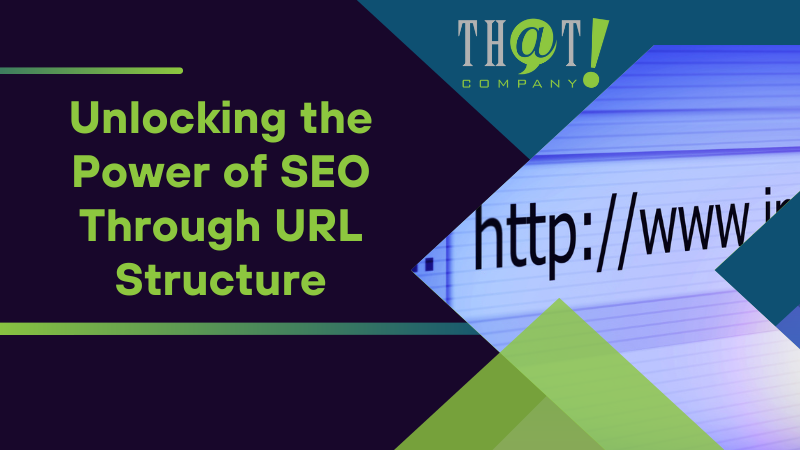
Unlocking the Power of SEO Through URL Structure
Think of the SEO world as a puzzle, where various elements combine to form a complete picture. One such key piece is the URL structure. A well-structured URL acts as a spotlight, clearly indicating the content of the page to search engines, and contributing to improved search rankings. But that’s not all; an effectively structured URL also assists users in understanding the page content, potentially enhancing click-through rates from search results. So, it’s all about being simple, relevant, and precise.
A user-friendly URL that is also easily deciphered by search engines aligns with best SEO practices. The role of URLs extends beyond simple navigation. It shapes the overall user experience and contributes to SEO, making understanding and optimizing URL structure a key player in boosting both user experience and SEO performance. So, are you ready to harness the power of SEO through URL structure? Let’s explore further!
The Significance of URL Consistency
Imagine trying to find a specific house in a street where the numbering is haphazard and inconsistent. You’d probably end up lost and frustrated. Similarly, inconsistent URL structures can lead to inefficient navigation for both users and search engines. Superfluous words in URLs, like ‘/category/‘, can undermine the clarity and efficiency of navigation.
Maintaining a streamlined URL structure, devoid of unnecessary words, paves a smooth path for users and search engines, thereby elevating the overall website experience. Remember, a consistent uniform resource locator structure is like a well-marked street, guiding users effortlessly to their destination. In this context, understanding the importance of a uniform resource identifier is crucial for effective website navigation.
Strategic Use of Keywords in URLs
Much like a catchy headline lures readers into a news article, a URL populated with strategic keywords can enhance your site’s visibility on search engines. Incorporating keywords in the URL increases the likelihood of your site ranking for those chosen terms, providing clear indicators of the page’s content to search engines. But it’s not just about pleasing search engines; it’s also about enhancing user experience. Keywords in the URL help users understand at a glance what a page is about, potentially impacting click-through rates.
Choosing accurate keywords for a category URL structure is essential to convey the kind of content or products contained within, improving both search relevance and user navigation. So, whether it’s a blog post or a product page, remember to sprinkle relevant keywords in your URLs, but don’t forget to keep it user-friendly!
Short vs Long URLs: Best Practices
Having underscored the importance of consistent URL structures and strategic keyword placement, it’s time to tackle another crucial issue: the debate between short and long URLs. Shorter URLs offer a better user experience as they are easier to read, remember, and type. Moreover, due to their brevity, short URLs are more shareable across social media platforms and fit well within textual constraints like character limits.
However, while keeping URLs short, it’s crucial to include enough descriptive information to inform search engines about the page content. A useful tip is to use hyphens instead of underscores in URLs. It helps search engines recognize and separate terms effectively, thus benefiting SEO.
Consider your web address as a tweet – it should be concise, informative, and readily shareable like a video or audio document!

Decoding the Anatomy of a URL for SEO
Having understood the significance of URL structure in SEO, let’s now venture into the anatomy of a URL. A URL, akin to a street address for a resource on the internet, is used by browsers to locate specific resources online. The basic structure of a URL includes the root domain, which is the main identity of a website, and the url path, which represents the folder structure or location of the specific content on the site. An absolute URL comprises multiple parts – the scheme, domain name, and path, which respectively dictate the protocol used, the identity of the website, and the specific content being accessed. In contrast, a relative URL omits the scheme and domain name, relying on the browser to determine the correct base URL.
From an SEO perspective, static URLs are preferable as they remain constant with each page load and are more easily recognized and indexed by search engines than dynamic URLs that contain parameters. The top-level domain (TLD), such as .com or .net, is a critical SEO consideration since different TLDs can influence how a website is perceived and treated by search engines and users worldwide. Yes, there’s more to a URL than meets the eye!
Understanding Protocol and Domain Extension
In terms of the protocol segment of a URL, utilizing ‘https://‘ is fundamental for adhering to SEO best practices. The ‘https://‘ part of a URL stands for Hypertext Transfer Protocol Secure, indicating that the website uses a secure, encrypted connection. This not only helps protect your site and its visitors but also signals to search engines that your site is secure, which can positively impact your SEO.
So, when you’re setting up an http url next time, ensure to utilize ‘https://‘.
Navigating the Path: Subdirectories and Slugs
Site navigation should be as effortless as traversing a well-marked trail. That’s where subdirectories and slugs come into play. Subdirectories in a URL help to organize and categorize content, indicating the type of content within a section of the website. They not only categorize page information within the subdomain and Second-level Domain (SLD) but also help improve SEO by keeping URL structure flat and efficient for search engine crawling.
Slugs, on the other hand, are the readable parts of a URL that explain the page’s content. Incorporating hyphens in slugs within URLs augments readability and facilitates search engine interpretation. An example of effective use of subdirectories could be an eCommerce store’s URL structure that includes a dedicated subdirectory for SEO software, optimizing the URL for both users and search engines.

Crafting SEO-Friendly URLs for Different Content Types
Having demystified the anatomy of a URL and its structural significance, it’s time to shift our attention towards designing SEO-friendly URLs for diverse content types. For organizing event and seasonal campaign pages, leveraging specific prefixes or subfolders can streamline organization and SEO, making post-event redirect management more manageable. Incorporating clear, descriptive keywords in campaign URLs not only improves user understanding but also aids search engine recognition of the page’s relevance.
However, remember that while it’s important to include keywords, it’s equally vital to avoid keyword stuffing in campaign URLs. Instead, focus on succinctly covering the topic with necessary keywords. So, the key to crafting SEO-friendly URLs lies in striking a balance between usability and optimization.
Tailoring URLs for Blog Posts
A touch of strategy can work wonders when it comes to creating URLs for blog posts. Incorporating targeted keywords in blog post URLs can significantly aid in improving the post’s visibility on search engines. Place the primary keyword near the beginning of the blog post URL, as search engines give less weight to words towards the end. Also, choose keywords that are highly relevant to the user’s expectations, rather than just considering traffic volume.
To optimize URL readability and recognition by search engines, follow these guidelines:
- Use hyphens for word separation
- Use lowercase letters to prevent duplicate URLs caused by case sensitivity
- Keep blog post URLs short and descriptive to enhance readability and SEO value
- Avoid keyword stuffing to prevent SEO penalties.
Lastly, sidestep the inclusion of dates in blog post URLs, particularly for annually updated content, to maintain link equity and guarantee users reach the most current content via old links.
Structuring Product Page URLs for Maximum Impact
Much like a tailor-made suit provides a perfect fit, a meticulously structured product page URL can significantly boost your SEO performance. Here are some tips for creating effective product page URLs:
- Keep them concise and to the point.
- Include clear, relevant keywords that describe the product.
- Incorporate categories and subcategories to help search engines and users understand the product’s place within the site hierarchy.
By following these guidelines, you can create web page URLs that are both user-friendly and search engine-friendly for your product pages.
Using accurate and descriptive keywords in the category parts of the URL structure aids users in finding the content or products they are seeking. However, remember that URLs with excessive hyphens can be seen as spammy and may be off-putting to users. So, when structuring product page URLs, keep it short, clear, and laser-focused on the product.

Enhancing User Experience with Intuitive URL Navigation
URL structure is not solely about optimizing for search engines, but it equally focuses on enhancing the user experience. A well-structured URL can significantly enhance user experience and site organization. Some benefits of a well-structured URL include:
- Consolidating link equity by using subfolders instead of subdomains to organize content
- Assisting with intuitive site navigation
- Simplifying the management process by having reusable URL structures for events and seasonal campaigns
- Contributing to a consistent user experience over time.
However, remember that on mobile devices, the browser’s address bar disappears when a user scrolls down and reappears on scrolling up, affecting how directly users can interact with URLs during their visit. Thus, intuitive URL navigation is crucial for enhancing user experience.
The Role of Breadcrumbs in URL Structure
Reflect for a moment on the last occasion when you utilized a map. It provided a clear path from your current location to your destination, didn’t it? This is exactly the function breadcrumbs fulfill in URL structure. Breadcrumb navigation offers a series of links from the current page back to the homepage, allowing users to navigate the website with ease. As a secondary navigation aid, breadcrumbs are particularly important on large websites where users may delve deep into the site hierarchy.
Having breadcrumbs in the URL structure aids users in understanding their current position and how to navigate to previous sections, thus improving the user experience. There are different types of breadcrumbs that can be used:
- Location-based breadcrumbs that reflect the hierarchical structure of a website
- Attribute-based breadcrumbs that give a fuller picture of the user’s position within the site’s hierarchy
- Path-based breadcrumbs that track the specific navigation path a user has taken
The inclusion of breadcrumbs enhances website navigability and user orientation.
Breadcrumbs must be designed responsively to maintain their usability across different devices and screen sizes. After all, it’s all about guiding the user seamlessly through their journey on your website.
Implementing Semantic URLs for Clarity
The adage ‘clarity is power’ is applicable to URLs as well. Semantic URLs significantly enhance user experience and SEO as they clearly indicate what to expect on a page. By reflecting the content and hierarchy of a site, semantic URLs aid search engines and users in navigating the content effectively. Implementing semantic URLs that resonate with the content of the page can enhance a website’s visibility in search results by meeting the expectations of semantic search and user intent.
Utilizing a collection of related keywords and topics within semantic URLs, known as a semantic core, can improve a webpage’s significance and authority regarding a specific subject. So, remember to employ inherently meaningful words that are universally understandable in your URLs. It’s not just a best practice for URL construction but a step towards optimizing for clarity and understanding.
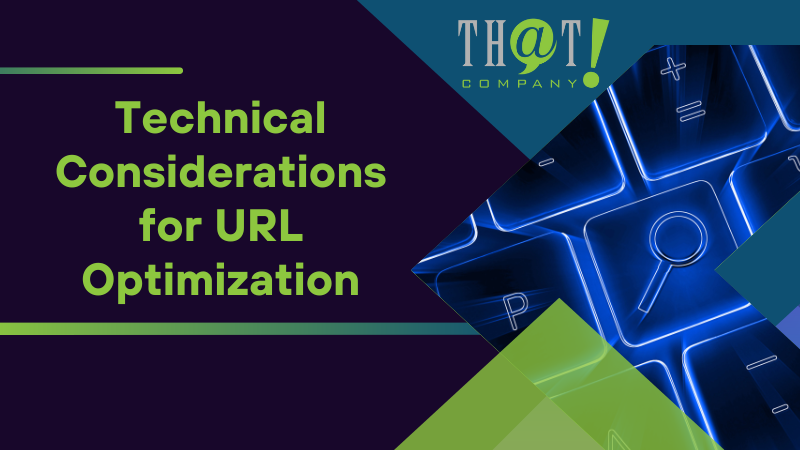
Technical Considerations for URL Optimization
Traversing the technical terrain of URL optimization can seem intimidating. However, understanding and addressing technical aspects, such as URL parameters and trailing slashes, is vital for effective URL optimization.
In a URL, parameters are query strings or URL variables that consist of key-value pairs divided by an equal sign, with multiple variables separated by an ampersand symbol. These parameters are commonly used by websites to track marketing campaigns and user behavior or to perform extra tasks before the web server returns the resource.
Another technical facet worth considering is the application of trailing slashes. Standard best practices suggest using trailing slashes at the end for category directories but not at the end of URLs for web pages. However, some exceptions exist, as seen in some Google URLs that lack trailing slashes, which do not conform to these practices.
So, whether it’s handling URL parameters or deciding on the use of trailing slashes, technical considerations cannot be overlooked in URL optimization. Hiring SEO white label services will make every step better.
Handling URL Parameters and Query Strings
URL parameters can be seen as the DNA of a URL, carrying vital information about a page’s content, functioning, and tracking. However, these parameters can be a double-edged sword. While they can provide valuable insights into user behavior and track marketing campaigns, if not handled properly, they can result in the creation of duplicate or dynamic URLs that confuse search engines.
Furthermore, using lowercase letters in URLs is essential to avoid issues with duplicate pages as URLs are case-sensitive and can be seen as distinct by search engines. Thus, handling URL parameters and query strings with care is a crucial aspect of URL optimization.
The Debate Over Trailing Slashes
The discussion regarding the use of trailing slashes in URLs can be compared to the perennial debate about whether milk should be added to tea first or last – it’s a topic which elicits a variety of opinions, and the answer isn’t as direct as it may initially seem. Trailing slashes in URLs indicate that the URL is pointing to a directory rather than a specific file. Omitting trailing slashes may cause web servers to perform a directory lookup, redirecting the user from example.com/test to example.com/test/. This may seem like a minor difference, but search engines treat URLs with and without trailing slashes as separate pages, potentially causing duplicate content issues.
The general consensus among web developers and search engines is that trailing slashes should be used consistently. Modern browsers and search engines recommend using trailing slashes for directories and omitting them for files, reflecting the resource’s nature. So, when it comes to the debate over trailing slashes, consistency is key!

Advanced Tactics: Leveraging URL Structure in Marketing Campaigns
Having mastered the basics and delved into the technical aspects, it’s time now to explore advanced tactics of utilizing URL structure in marketing campaigns. In the same way a ship uses radar to track its surroundings, URL tracking allows businesses to monitor the efficacy of marketing campaigns by identifying the traffic sources and user behavior on a website.
By creating custom URLs and analyzing URL data, businesses can gather invaluable insights into user interactions and the effectiveness of their marketing campaigns. Let’s unravel these advanced tactics!
Creating Custom URLs for Campaign Tracking
Envision having the capability to measure the success of your marketing efforts down to the smallest detail. That’s the power of custom URLs with UTM parameters. These are instrumental in tracking different traffic sources, mediums, and campaigns, pinpointing which marketing efforts are most effective. Tools like Campaign URL Builder simplify the creation of URLs with appended parameters for various platforms, aiding in consistent tracking across web and mobile campaigns.
Remember, these parameters should be correctly formatted when setting up custom URLs, including the use of a question mark to distinguish them from the main URL, and ampersands to separate parameter pairs. When included in custom URLs, UTM parameters allow for detailed tracking of user interactions with marketing initiatives, offering insights into the effectiveness of different channels and content engagement.
Qualitative data from custom URLs can provide a performance overview of campaigns via the Traffic Acquisition Report, displaying sessions based on the source, medium, and campaign. So, next time you’re planning a marketing campaign, remember to incorporate custom URLs for precise tracking and insights.
Analyzing URL Data for Strategic Insights
URL tracking data, akin to a treasure map, can guide you towards a trove of strategic insights. Understanding this data is critical for gaining insights into how users interact with a website. Engagement metrics derived from URL analysis can pinpoint areas of strong performance and highlight where improvements are needed.
Strategically, URL tracking data can inform decisions regarding:
- Where to allocate resources
- How to optimize marketing efforts for better returns
- Refining SEO strategies using insights from URL data analysis to enhance campaign effectiveness and lead to better results
So, don’t just collect data, dig deep into it, and let it guide your strategic decisions!
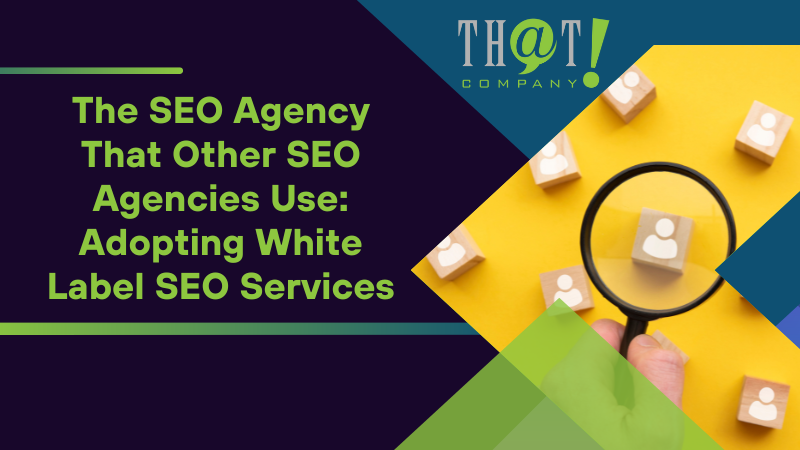
The SEO Agency That Other SEO Agencies Use: Adopting White Label SEO Services
After traversing the complex realm of URL structure and SEO, it’s time to shift gears and introduce a distinctive solution for SEO agencies. Picture this: you’re able to offer expert SEO solutions to your clients without the need for in-house expertise. Sounds too good to be true? Welcome to the world of white label SEO services!
White labeling involves the process of eliminating a product or service’s branding and logo, replacing it with branding specified by the buyer. White label SEO services empower agencies to extend SEO expertise to their clients without the requirement of an in-house team. By outsourcing the search engine optimization work, digital marketing agencies can focus on core aspects of their business like product delivery and customer experience.
And when it comes to white label SEO, That! Company is the go-to provider for agencies seeking professional SEO solutions that they can rebrand as their own.
White Label SEO: A Powerful Tool for Agency Growth
White label SEO acts as a magic wand, enabling agencies to:
- Broaden their SEO offerings without the necessity to cultivate in-house expertise or infrastructure
- Expand their service offerings cost-effectively
- Enhance their ability to attract and retain clients and grow their revenue
- Incorporate comprehensive SEO solutions through white label services
- Create upsell opportunities for existing clients
- Avoid losing potential new business
Utilizing white label SEO services offers several benefits:
- Saves money for agencies
- Provides a comprehensive range of SEO services more affordably than developing in-house capabilities
- Increases an agency’s productivity by enabling them to serve more clients simultaneously with efficient SEO workflows.
Businesses gain a competitive advantage from white label SEO services that equip them with top SEO talent and advanced tools, thereby enhancing their online presence and standing out from competitors. So, if you’re looking to grow your agency and boost your SEO offerings, white label agency services might just be the powerful means you need!
Partnering with That! Company for Expert SEO Solutions
Within the domain of white label SEO, That! Company is recognized as a trusted ally. Collaborating with That! Company for white label SEO services can save you time and resources, enhance your competitiveness, and improve your market share. With over a decade of experience and a proven track record, That! Company brings a wealth of knowledge to the table, enhancing trust in the white label SEO services they offer.
Whether you’re a large agency looking to outsource SEO or a small agency seeking to resell SEO services, That! Company caters to varied business needs, providing white label SEO services through direct engagement as an agency partner or by allowing agencies to resell their SEO services. So, if you want to offer expert SEO solutions without the need for an in-house team, consider partnering with That! Company – The SEO Agency That Other SEO Agencies Use!
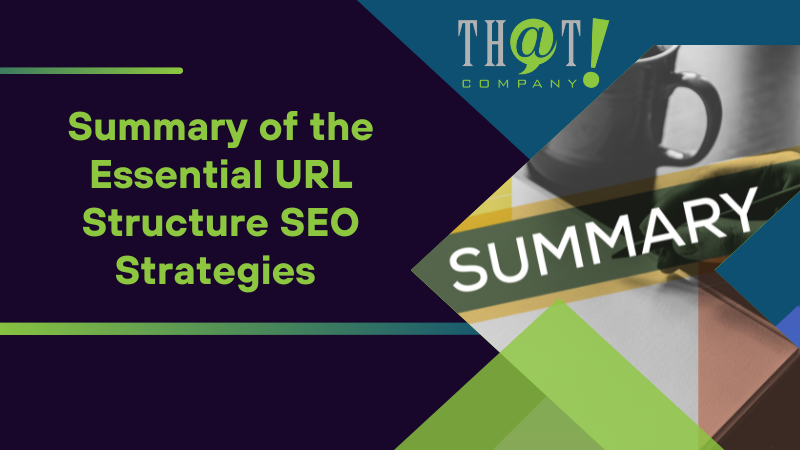
Summary
In this comprehensive guide, we’ve journeyed through the captivating world of URL structure and its impact on SEO, from unlocking the power of SEO through URL structure to advanced tactics of leveraging URL structure in marketing campaigns. We’ve tackled key principles, explored the anatomy of a URL, discussed the importance of creating SEO-friendly URLs for different content types, and highlighted the role of user experience in URL navigation.
We’ve also navigated through technical considerations for URL optimization and introduced white label SEO services as a unique solution for SEO agencies. As we arrive at the end of this enlightening journey, it’s clear that a well-structured URL isn’t just a technical necessity; it’s a strategic tool that can significantly enhance your SEO performance and user experience. So, whether you’re an SEO agency, a web developer, or a business owner, remember to give your URL structure the attention it deserves, for it holds the power to unlock your SEO potential!

Frequently Asked Questions
What is the URL structure?
The URL structure consists of a protocol, domain name, and path. The protocol determines how the browser fetches the page, which can be either http:// or https://. Date not specified.
What is an example of a URL for SEO?
An SEO-friendly URL example is “https://en.wikipedia.org/wiki/pancake”. It is simple, easy to read, and includes keywords describing the content (without the date at the end).
Does URL structure affect SEO?
Yes, URL structure significantly affects SEO as it is important for content optimization and is a factor considered by search engines like Google. [No date/artifact]
What is a semantic URL?
A semantic URL contains descriptive words that clarify the content of the webpage, providing an improved user experience and SEO benefits.
What are white label SEO services?
White label SEO services allow agencies to provide SEO expertise to clients under their own brand, keeping third-party involvement confidential.















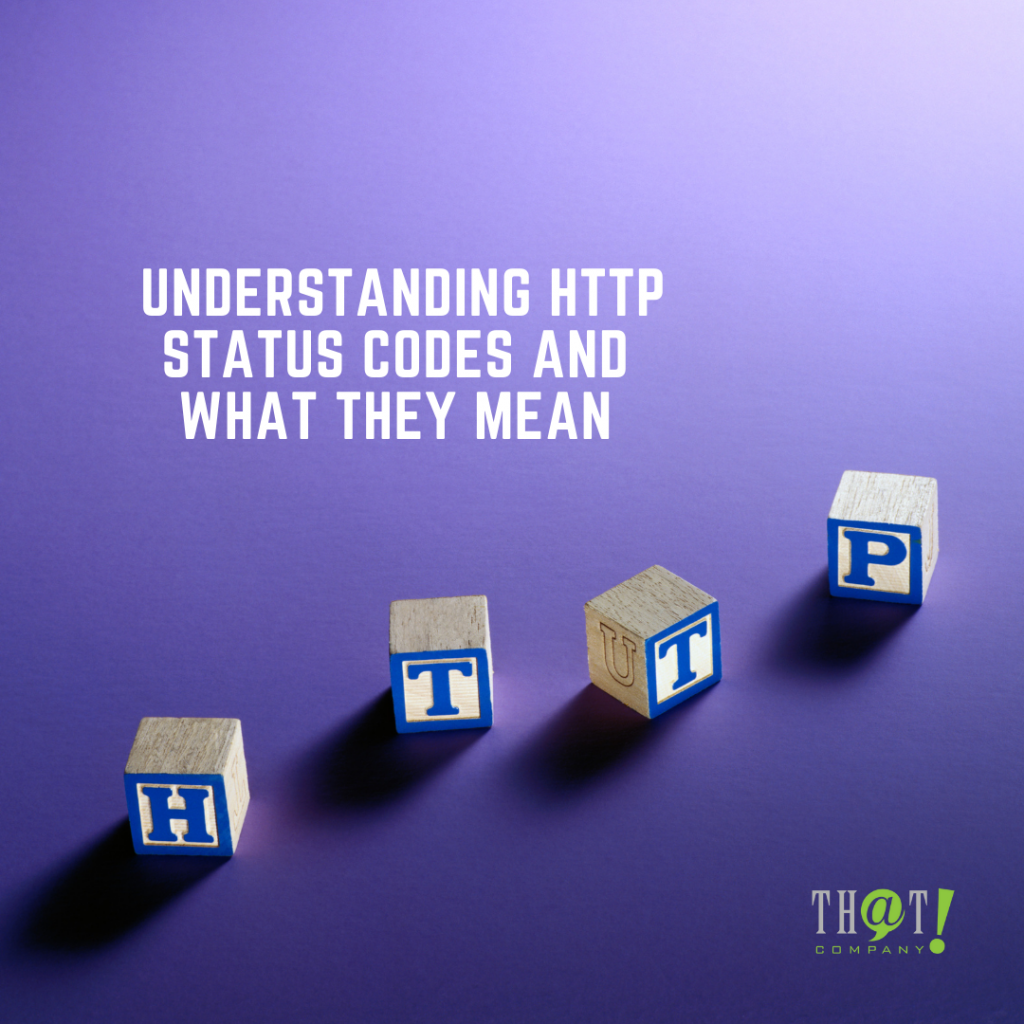




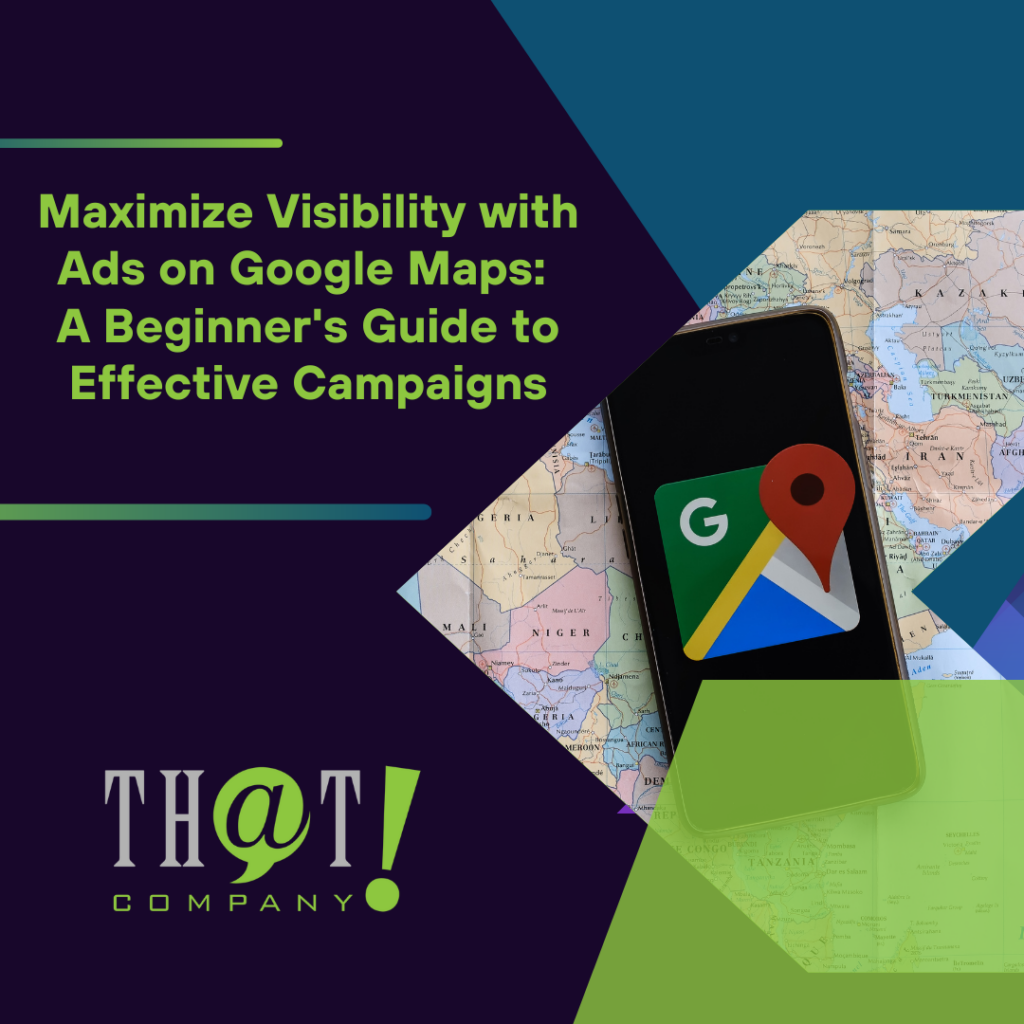
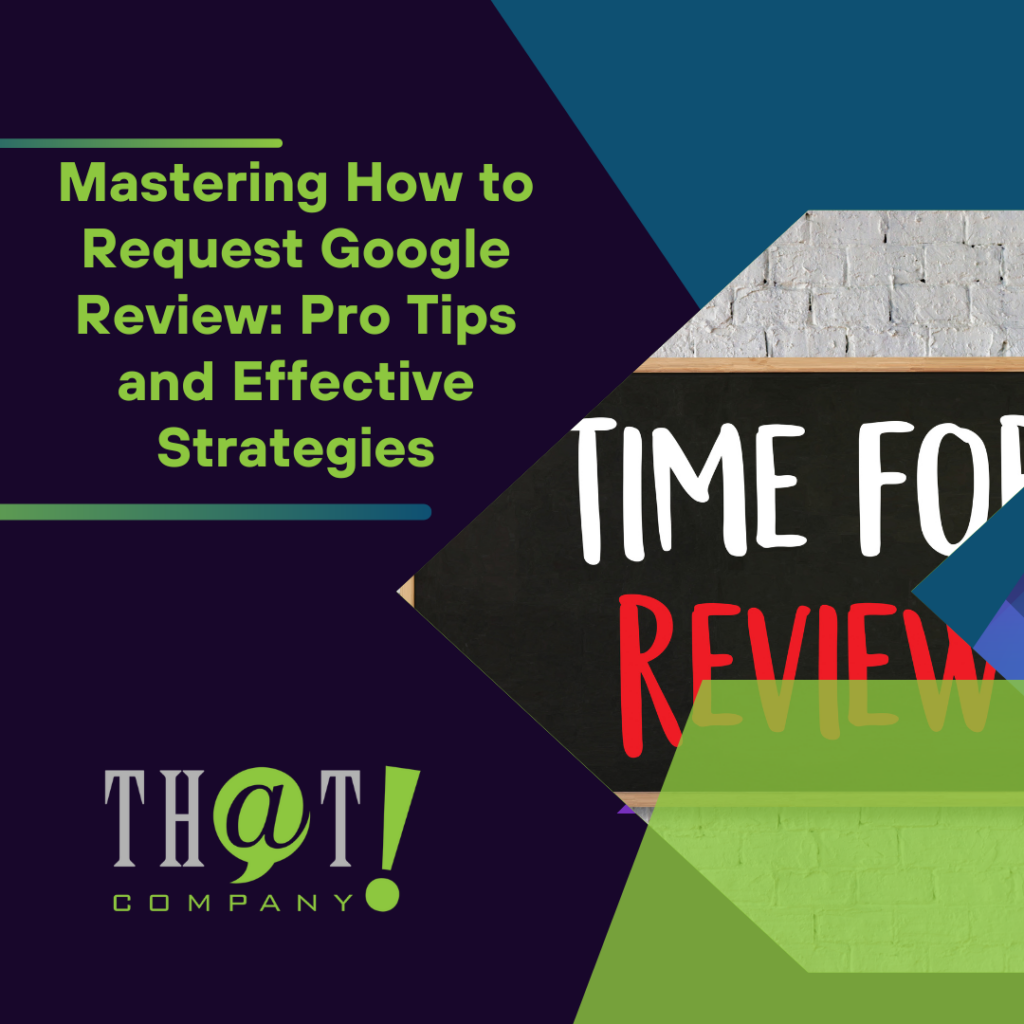

 Talk With Us
Talk With Us  Give Some Love
Give Some Love 


